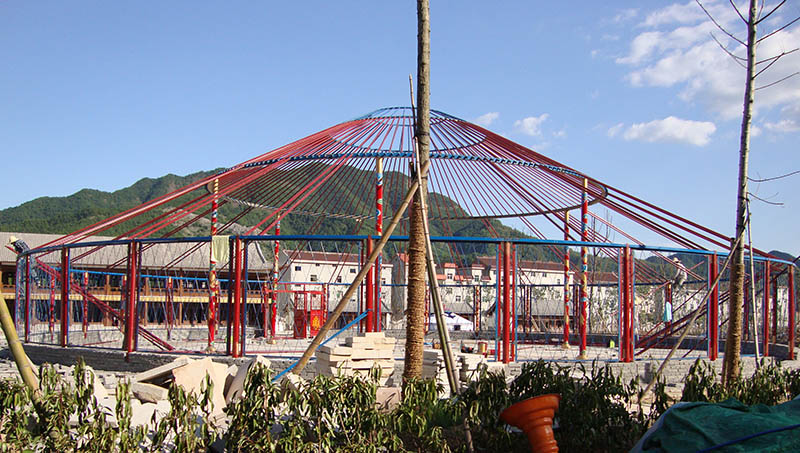This article is about the materials used in the construction of the yurt. The materials used in the construction of the yurt are classified according to the classification of the yurt: wooden yurt, steel frame yurt, luxury yurt, etc. There are several materials for the construction of the yurt skeleton. The outer skin of the yurt is all the same canvas. The yurt is a home built two thousand years ago. What are the materials used to make the yurt?
The construction of yurts, with the improvement of people’s living standards in recent years, people have become more and more keen to travel abroad. Grassland tourism is a very important part of people's goals. As the core part of grassland tourism, yurts have been widely used in recent years. Investors are concerned about the fact that yurts are a new domestic business opportunity with limited manufacturers. The yurt products are often in short supply. Many customers cannot buy the yurts they want. Therefore, yurts have become a scarce item for grassland tourism in recent years. Many yurt manufacturers have appeared in the yurt market. These manufacturers can produce high-quality yurts. The quality of these yurts produced in the factory is no less than that of traditional Mongolian yurts.

As a kind of accommodation tool, the yurt is composed of three major parts: frame wood, thatch felt, and rope. Among them, frame wood includes sling, uni, hana, and threshold. There are two types of yurts: coupling type and inserting rafter type. The wood is better, generally made of sandalwood or elm. The difference between the two types of ferrules is that the crossbars of the coupling ferrules are separated, and the rafter ferrules are not distinguished. The coupling ferrule has three circles, and the outer circle has many small wooden strips that are used to connect unni. This kind of nau and unni are connected together. Because it can be divided into two, camels are very convenient to transport. Unitong translates to rafters, which are the shoulders of the yurt, with the upper link and the lower link with Hana.
The length of the yurt should be uniform in size and thickness. The wooden requirements are the same. The length is determined by the yurt, and the quantity should also change with the yurt. This way the yurt can be shoulder-length and round. Unni is a slender wooden stick, oval or round. The upper end must be inserted or connected with the overburden, and the head must be smooth and slightly bent, otherwise the felt bag made is easy to tilt and fall. There is a cord buckle at the bottom to make it easier for Hana to put her head together. The thickness is determined by Hana, and it is usually stuck in the female fork at Hana's end, and the upper end is exactly level. Unni is generally made of pine or red willow.
To build a fixed yurt more firmly can resist how much wind, the belts, ropes, ropes, ropes, ropes, etc. needed to make the yurt are used to maintain the shape of the yurt and prevent the Hana from exploding outwards and make the roof. , Wai felt will not slide down, lift up in the wind. In short, it has a great effect on keeping the yurt firm and prolonging its life. The Mongolian encircling rope is the rope encircling Hana, made of horsehair and tail. There are inner ropes and outer ropes. Twist the horsehair and tail into six thin strands, twist three strands from the left and three strands to the right to form a rope, and then use two, four, or six strands to sew into a flat one.
The advantage of this kind of yurt is that it can eat energy without stretching. The inner rope is a wool rope tied around the middle of the naked Hana when the yurt was erected. Hannah is under great pressure, and the quality of the inner rope must be particularly strong. Once the inner rope is broken or not tied tightly, the Haha will be pushed out, the yurt will sink, and the yurt is in danger of collapsing. The outer rope is tied to the outside of the felt and is divided into upper, middle and lower three. The colors of the ropes are well matched, and they are flowery. The outer rope has a wide range of functions. The outer rope not only prevents the hana from bulging out, but also prevents the felt from falling down.